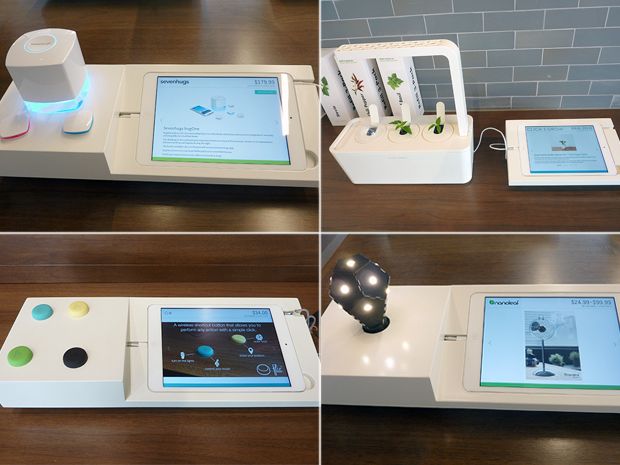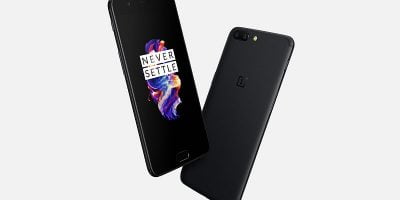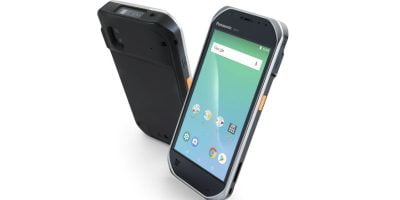
Vibhu Norby isn’t like most of the consumers who buy high tech hardware; he doesn’t wait until it shows up at Best Buy or Costco. He’s a classic early adopter who does most of his shopping on Kickstarter or Indiegogo, sites from which he’s willing to preorder the latest gadgets and wait months for delivery. He often buys this gear sight unseen, and realizes only after delivery that sometimes the product shipped doesn’t quite fulfill the promise of the product pitched. But that was okay for him.
He didn’t think much about how other people bought gadgets, or brick-and-mortar retail in general. He was a software developer doing software startups, and software was easy to sell online.
Then he landed at Nest (now part of Google), as an engineer for the smart thermostat company. There he discovered how tricky it is to sell hardware to the average consumer, who, unlike him, wants to see it, touch it, and ideally, try it at a store before spending a couple of hundred dollars to take it home.
“Nest,” Norby said, “did a good job of getting the product onto retail shelves, but inventory wasn’t being kept up, store associates weren’t being trained, and boxes were ending up scattered all over the floor. It was frustrating.”
Norby talked to his peers at other young consumer electronics hardware companies, and found out that they were even more frustrated—they couldn’t even get their products into normal retail stores. “One guy recently told me Apple told him it’d be six months before they could schedule a meeting; Frye’s told him it would take them a year to decide.”

In an industry in which you can build a prototype out of an Arduino kit in hours, and get a new product on a manufacturing line in China in months, nothing should take a year, Norby thought. “Retail,” he says, “needs to be fixed. It’s in a lot of trouble, and if it’s not fixed, it will take hardware manufacturers down with it.”
Last February, Norby left Nest on mission to fix retail. And in December he opened his first store, B8ta, in downtown Palo Alto.
Here’s how B8ta works. Companies pay a monthly subscription fee to put their product in the store. They can choose to have B8ta keep inventory on hand to sell on site, or to have store employees direct potential customers to company web sites for direct sales or preorders. Every product in the store sits next to a B8ta-designed touch-screen terminal that displays product information, price, videos—or just about anything the product manufacturer wants to put there; the manufacturer can make changes in this information remotely at any time, tweaking marketing materials and pricing.
B8ta uses security cameras in the store to track user engagement—how long a visitor looks at a product and its accompanying promotional material—and reports that to the manufacturer. B8ta staff members also gather information when people purchase products; in particular, about what exactly they expect to use a gadget for. “Use cases are huge for anybody making a product,” Norby says.
Norby says his staff members make a real effort to familiarize themselves with the products—ideally, by getting trained directly by the product designers. B8ta’s staffers are paid more than is typical for retail (Norby won’t say how much), largely because they are the smartest folks he can hire. On the day I visited the store, the greeter was a person with a chemical engineering degree from Brown University. Another member of the staff, Norby said, is working at B8ta while applying to Ph.D. programs in neuroscience; other employees were former coworkers at Nest.

Norby thinks B8ta solves a couple of problems. Among them: gadget geeks’ frustration at being unable to find the gear they see on Kickstarter, other online sites, and CES news anywhere in the real world; and later adopters’ exasperation with retail staff members who can’t explain anything. But he thinks B8ta’s model does more than just solve those problems.
“As a software engineer,” he says, “I think of retail as the ultimate distributed system. Each store is a node in a network. If you operate stores like software, sell them like software as service, and measure the success like software, not only can you open retail to small manufacturers, but you can change how retail is done as a business.”
According to Norby, it shouldn’t matter if consumers go into a store just to browse, and then ultimately make their purchase later online. “We changed the measure of success to engagement with a product, not with sales. In the world of the Internet, why does it matter where someone swipes a credit card?”
“People have started a lot of companies in Palo Alto,” Norby says. “But nobody yet has started a retailer here that ate the rest of the industry. It’s time.”
[Source:- Spectrum_IEEE]


